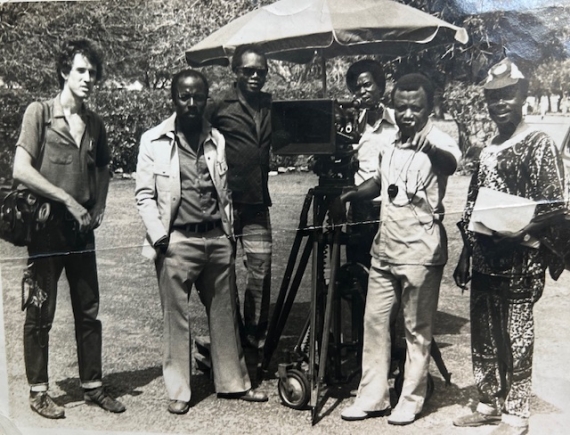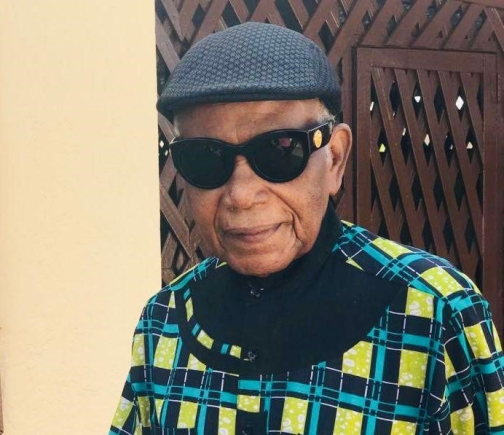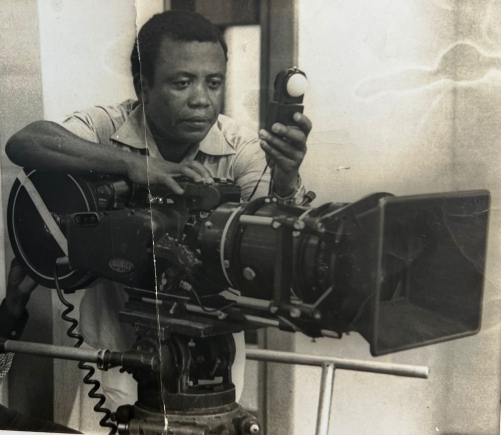FOR 93-year-old Rev. Chris Tsui Hesse, photography and life have been the same thing since 1954, when he enrolled at the West African Film School, which later evolved into the Ghana Film Industry Corporation (GFIC).
Tsui means ‘heart’ in the Ga language, and over the years, the man has displayed a brave heart and intense passion for the art and science of using light to capture images on film.
The Eyes of Ghana
Being the subject of the recently - made 'The Eyes of Ghana' documentary by Canadian filmmaker, Ben Proudfoot which premiered at the Toronto International Film Festival last month, many people in Ghana and elsewhere have become more aware of the man from Osu in Accra.
His sheer volume of work in newsreels, documentaries and features sets him apart as an artist deeply committed to his craft, always striving to deliver the best possible results.
Rev. Hesse has earned particular praise from several film editors who have worked with his footage for consistently keeping the editor in mind. Recognising that a film truly takes shape in the editing room, he often envisioned the final product even as he captured unfolding events — especially in his work on newsreels.
“Rev. Hesse had an unmatched level of dexterity and speed in coverage of evolving situations. He had a real photographer’s eye. He could make picturesque images out of mundane situations,” writer and film director Ernest Kofi Abbeyquaye, who worked on several projects with Rev. Hesse at GFIC, said.

Presidential praise
After Ghana’s independence, the infrastructure of the GFIC was significantly improved. President Nkrumah subsequently tasked the corporation with producing weekly newsreels — not so much to bolster his image, as some assumed, but to harness the power of film as a means of accurately conveying his words and actions to Ghanaians and audiences beyond.
Having noticed the young Hesse at several events — and impressed by the quality of his work on screen — Nkrumah praised him and instructed the GFIC to assign him regularly to cover his programmes.
Thus began a working relationship that saw Rev. Hesse frequently at Flagstaff House and accompanying Dr Nkrumah almost everywhere he went. He was with the President in Hanoi when the coup that overthrew him took place in 1966.
“There were other good cameramen at GFIC, but Nkrumah noticed Rev. Hesse and was really impressed with his work,” stated James Mettle, a GFIC cameraman who worked closely with Rev. Hesse, adding, “He was good at his work and he deservedly came to the limelight.”
Rev. Hesse didn’t only work on newsreels. He shot and directed documentaries and was the cinematographer on several feature films.
A cinematographer is responsible for shaping the visual look and feel of a film. They make crucial decisions on elements such as lighting, camera placement and movement, lens selection, and composition — all to help bring the director’s vision to life.
Feature films Rev. Hesse handled included Ato Yanney’s His Majesty’s Sergeant and Kwaw Ansah’s Love Brewed In The African Pot, Heritage Africa and Harvest at 17.

Archival crusade
GFIC didn’t have a colour laboratory, so all its celluloid material was developed and printed in London. With time, a huge amount of vital, historical material on Ghana accumulated in London.
Mounting storage fees and threats of haphazard disposal of the material were a source of anxiety for those who knew that the country would lose a large chunk of its history if the material was thrown away by the vaults holding it.
One of such persons is Rev Hesse. He persistently pestered successive governments to ensure that the precious archival material was safely kept.
In fact, he has been the lone ranger pushing all the buttons he can for the safety of the material. It has even been said that he sometimes talked his children into paying off some of the accrued fees.
“I take my hat off to Rev. Hesse for the crusade he has championed over the years for the safekeeping of our important film records. I’m aware a bit of headway is being made now towards securing the films and eventually getting them digitised,” the Communications Director of the Ghana Academy of Film & Television Arts (GAFTA), George Bosompem, said.
GAFTA was founded by some of the prominent names in Ghanaian cinema and television, including Rev. Hesse, Kwaw Ansah, Martin Loh, Fara and Nana Adjoa Awindor, Setheli Ashong-Katai, Bill Marshal, Ernest Abbeyquaye and King Ampaw. It seeks excellence in our motion picture arena.
The organisation has collaborated closely with Canadian filmmaker Ben Proudfoot and his team on the making of The Eyes of Ghana documentary that highlights the all-important work of one of this country’s cinema greats.
Sources at GAFTA indicate that 'The Eyes of Ghana' will be screened in Ghana in early December this year. For those unfamiliar with Rev. Chris Tsui Hesse, the film will hopefully serve as an enlightening introduction to a significant chapter in Ghana’s cinema history.
Those who have known Rev. Hesse over the years will hopefully see the documentary as a fitting tribute to a man who poured his heart and soul into the art of filmmaking in Ghana.

